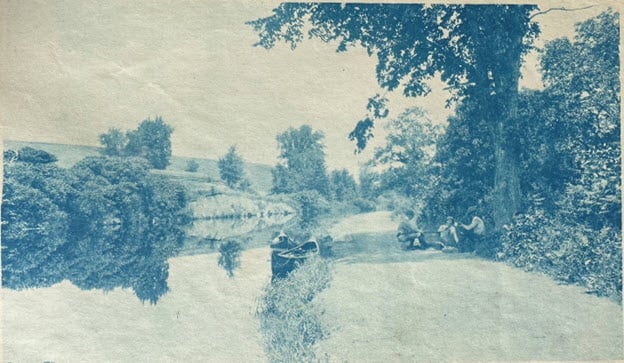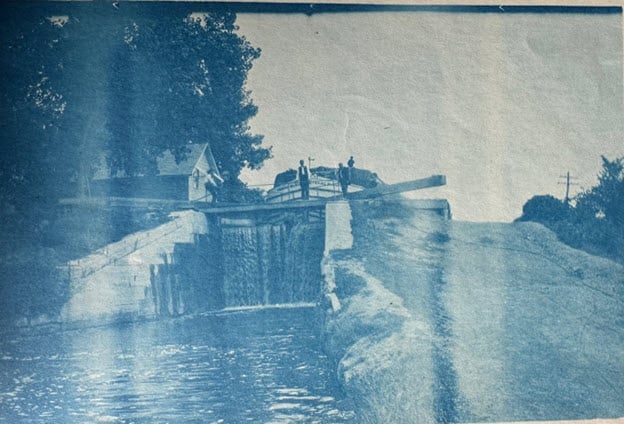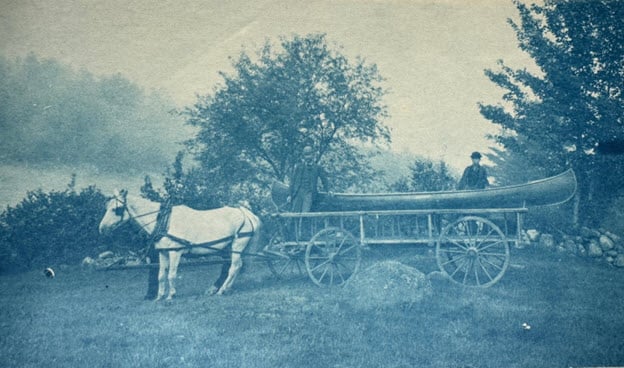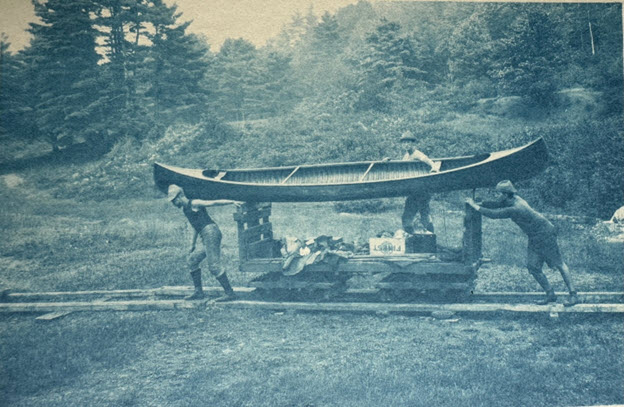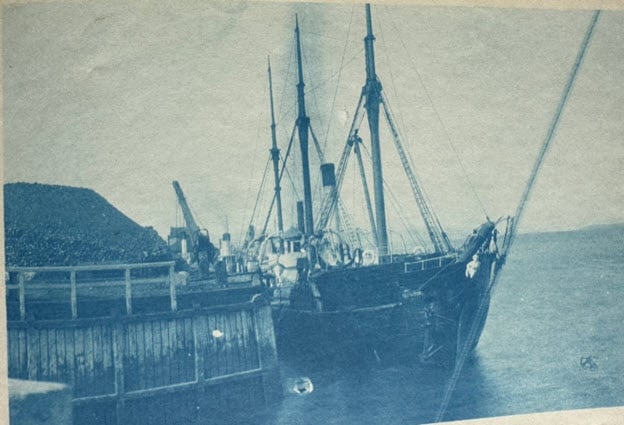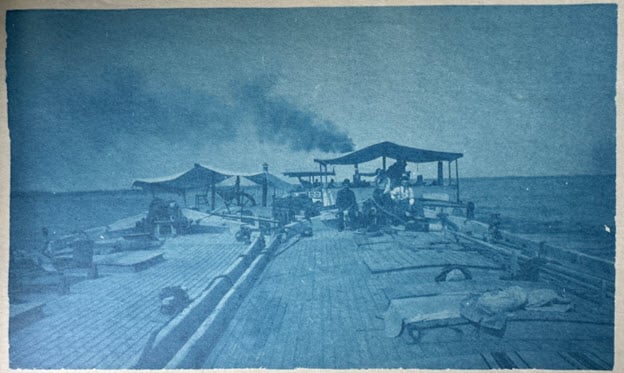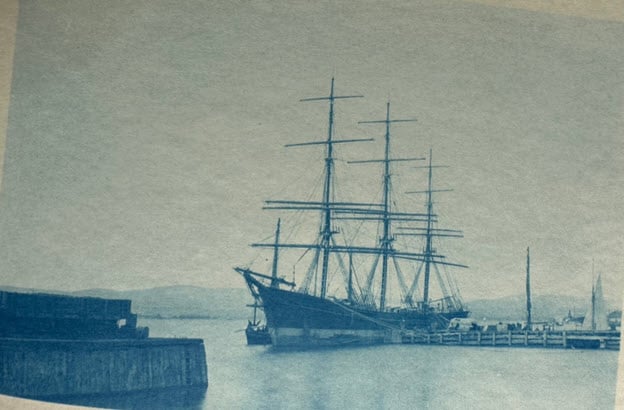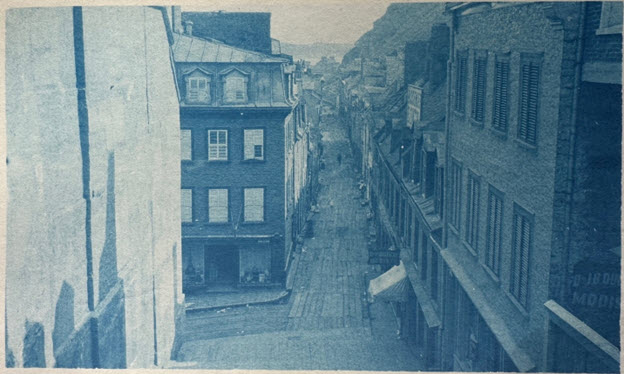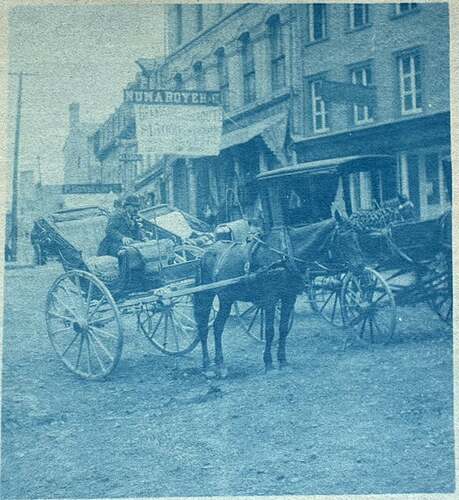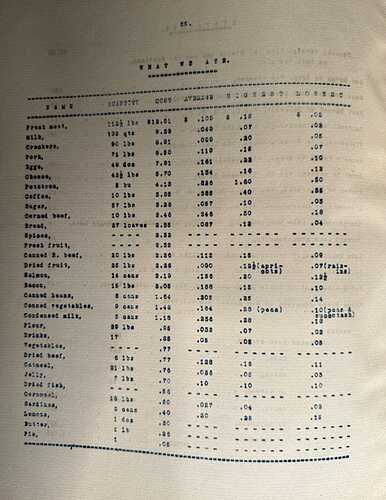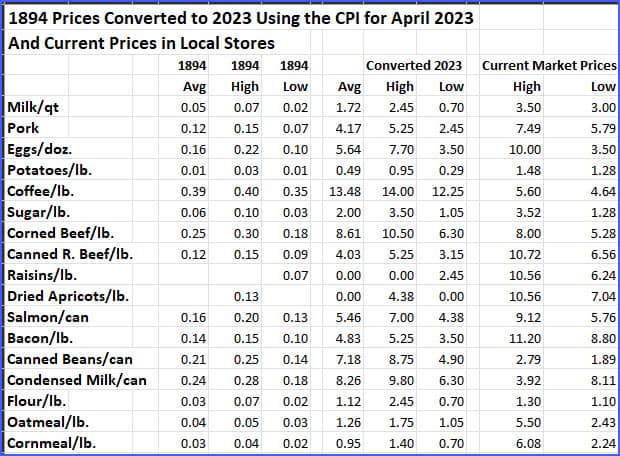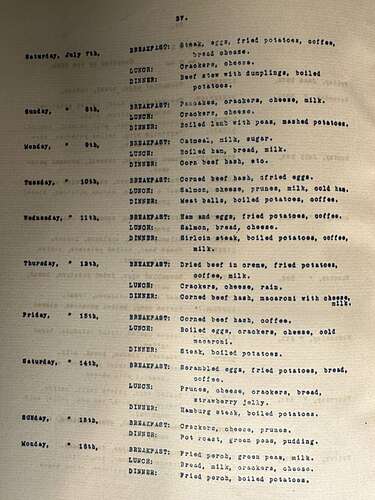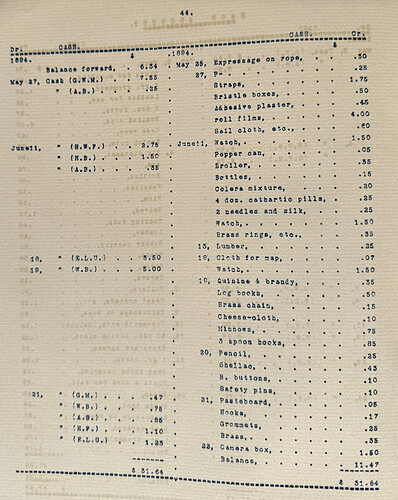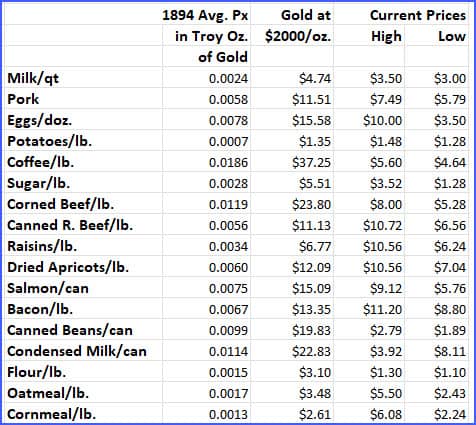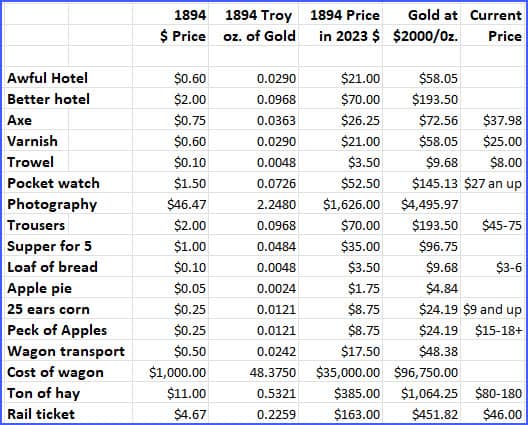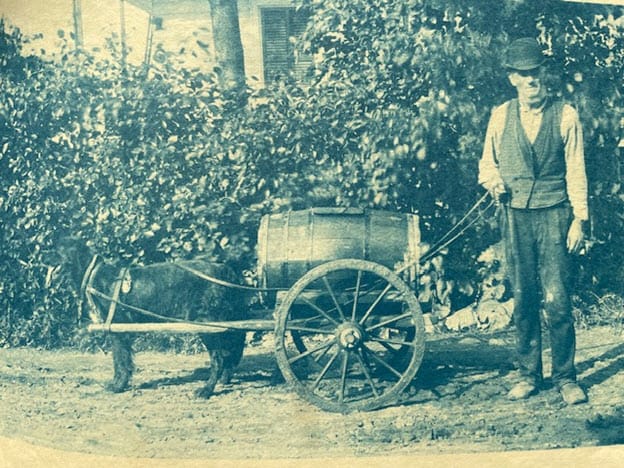Looking backward to the future
In one of the boxes of inherited family archives filled with scrapbooks, photo albums, odd letters, and more than a few pictures of people whose names are lost or completely forgotten, there is one item I have always found of interest. This is a book titled “Log Book of a Thousand Mile Canoe Trip, June 27 – August 25, 1894.”
It is the story of a great uncle’s adventure with four friends at the age of 18. They traveled by steamer from New Haven to Troy, New York, on the Hudson River, then paddled 37 miles up the Champlain Canal to Lake George and then on to Lake Champlain, then down the Richelieu River to Sorel on the Saint Lawrence River. From there they went downriver on a barge to Quebec, then by rail to the St. Francis River, paddled up the St. Francis and then took a short rail hop to the headwaters of the Connecticut River. From there they paddled downstream to Springfield and then went home again by rail.
Lunch along the banks of the Champlain Canal
The recounting of the trip itself is basically expected – boys will be boys after all, or at least used to be – and 18 is a wonderful age for an adventure, especially when one is solely responsible for one’s own well-being. Each of the five had a specific job. My great uncle was the cook, another was the “logger” who wrote the account, and another the purser to keep their finances straight. The final two were called the Tinker and the Sportsman. The Tinker’s main accomplishment at tinkering was to turn a watch that had failed into something to play catch with, and the Sportsman couldn’t hit much of anything with his rifle so clearly never hunted woodchucks in his earlier years as I did.
But the cook and the purser kept amazing records – every penny spent was recorded in detail, from a pencil to a pocket watch, a dozen eggs or pound of bacon, to railroad fares, occasional lodgings and purchased meals. Everything. By each day, item by item, and for food also in summary form as well, how much was bought at what average price and the highest and lowest price paid for each item. In addition, there is a listing of what was eaten for every meal.
I have read this account at long intervals over the last 50 years, but after reading The Crash Course I find the story unfolds in a whole new context, that of a much simpler life with a lot less energy. The unusual and unexpected details along with quite a few photos provide a very granular look at a small moment in time, but now this moment appears placed in a much broader perspective of an energy transition slowly transforming American life. For me, this makes the narrative and the pictures much more interesting. And for some of you thinking about the 1800’s, perhaps you will find it interesting as well.
A canal barge coming through one of many locks on the Champlain Canal
By 1894 coal has become the primary source of energy, but the transition has been slow and is still very much in progress. The primary transport is rail and steam engines on land and steam ships on major rivers or at sea. But in the photos we find a barge traveling through the locks on the Champlain Canal and a well-worn trail along the side made by the horses and mules that moved them along. We see a square rigger docked at a pier in Quebec, a barge coming down river with a single mast and a large square sail, and schooners still with bowsprits but only stubs of their former masts, now with a smokestack and pilot house amidships. But oil is nowhere to be seen or even mentioned, except for a complaint in the log about some low-quality coal oil that worked very poorly in the torch.
1894 Uber transport around dams or bad rapids
The do-it-yourself version between lakes. A “truck” on wood rails.
A converted schooner taking on coal along the St. Lawrence River
Horses and wagons and buggies of all descriptions are everywhere, readily available to hire for transporting the canoes and gear around rough stretches of rivers or portage between lakes, or generally anywhere one wanted to go. Hay is consequently still a very important source of energy to keep all the horses going, bringing $11 per ton on the US side, but only $7 in Canada, the result of a law the Canadians blame on McKinley.
Along the rivers are many dams that once turned the waterwheels for local gristmills and other businesses. The dams remain, but coal fired steam now operates the mills that turn logs into paper or milk into cheese. The telegraph is everywhere. You can send or receive a telegram from every town, but if you want fresh meat you might have to wait a day or two for the traveling butcher. Food is available all along the way, in the small towns or directly from farmers living along the shores of lakes and rivers. Variety is limited, especially for fresh vegetables and fruits, but there is plenty to eat and the prices for everything are often negotiable.
Hitching a ride on a barge to Quebec
The people met along the way all seem quite nice and mostly helpful, very proper and polite. It is a surprisingly civilized world with even people who are multi-language fluent and widely traveled found in unexpected places. Most of the farmers allow the kids to sleep in their barns, which are all bigger than their houses. One widow declines the request, not unreasonably thinking the boys might be careless and burn her barn down. On another occasion, the crew is accused by a stranger of eating lunch naked in a small hotel when dressed in their paddling clothes.
A square-rigger at a dock in Quebec
So our travelers are always quite conscious of how they appear and rather bashful, but still unable to suppress interest in the presence of well-dressed young ladies. The logbook itself never has a bad word to say, and to my eye seems almost excruciatingly sanitized. One doesn’t spill out of a canoe and lose some gear going down what looked like easy rapids and not have what were forbidden words to say. Doesn’t happen. But there are clearly rules to proper behavior and these rules apply everywhere and to everyone and follow the boys almost as if an unseen former nanny was always present and ready to whack them across the knuckles with a ruler.
Looking down at a street in Quebec. Lumber must have been very cheap!
Shopping in Quebec
This was the world my parents were born into a couple of decades later, only by then oil was rapidly replacing coal. By the time I was born in 1947, coal in general use was almost gone. I only once saw coal delivered to a building for heating. There were still lots of coal chutes in older houses like my grandparents had and many of the older business buildings in New Haven where I grew up, but heating had long switched to oil, natural gas or electricity.
In the very early 1950’s I did see one of the very last working steam locomotives in New England. Dad knew it was the end of an era and wanted me and my three brothers to be sure to see it, so he stopped the car at a nearby railroad crossing and had us all get out to watch. There were no flashing lights or gates that came down, just a sign saying “Danger. Railroad Crossing. Stop. Look. Listen.” That used to be all the warning that was necessary.
The memory of that moment has never faded. The locomotive came around a bend a half mile away, clouds of smoke coming from its stack and the hissing of the drive pistons making the comic book “choo-choo” sound growing louder by the second. It was a great big locomotive hauling a long line of boxcars and we were jumping up and down with excitement and waving like crazy to the engineer. He smiled and waved and gave us a blast of the steam whistle as the engine roared by. A magnificent moment and the only time I ever saw a working steam engine in New England! I wonder what today’s young kids will remember 70 years from now. It won’t be something on a computer or cell phone. I’m not sure I want to know.
The Tinker turning a watch into something to play catch with
But back to our boys and their meticulous accounting. There is no mention of tough times in the log, but 1894 was a depressed period, still early in a severe recession that started in 1893. Statistics don’t seem very precise, but an average family income was probably somewhere between 400 and 1000 dollars, and even less for a farm laborer. Peak wages for a farmhand in the harvest season were around $1.75 per day, substantially less in the off season. Hourly wages for factory workers were somewhere between 13 and 19 cents per hour depending on the industry and the typical workweek was in the process of declining from 60 hours down to 55. A house might cost $2000 and a decent carriage or wagon as much as $1000. Around 40% of a typical budget went for food, 15% for rent, 15% for clothing, and the rest for everything else. Life expectancy was 47 years.
There isn’t anything particularly important about 1894, but the data recorded in the logbook is unusually specific, so provides a window through which we have a brief glimpse of ordinary life 129 years ago, before the massive impact of the age of oil. We can take the data, adjust the prices paid by the CPI, and ponder the results. I am surprised by some of what I found and perhaps you may be as well. Maybe there is something to learn if we find our economy seriously running short of energy and simplifying in the years ahead. Even if not, some of the data may change our perspective.
The logbook lists the total cost of the trip at $331.77, with a total cost of food per head per day of 40 ½ cents and with lodging and purchased meals included 43 cents. The two canoes were already in family possession and at least some of their clothes, but all other costs are carefully recorded. If we apply the CPI calculator, the 1894 dollar was worth about $35 in today’s currency, so the cost of the trip was a little over $11,600, $14.18 for food per person per day and $15.05 if lodging and purchased meals were included. The average cost per person was $66.35, or $2322 in today’s dollars.
I think it is doubtful our five boys were earning this kind of money, but they almost certainly came from upper income, professional families, likely all working in New Haven. In the case of my great uncle, my great grandfather was a professor at Yale and in 1910 Yale professors were paid between 4000 and 5000 dollars. Adjusting that back to 1894 dollars, a rough range was probably between 3600 and 4500, or about 126,000 and 158,000 in today’s dollars. A March 2023 estimate of the median compensation for Yale professors is about 165,000, with a range between 96,000 and about 300,000. Surprised? In any event, if my great grandfather earned a midrange salary, the net cost of sending a very hungry, 18-year-old son off on a trip for 60 days was only around 1% of his salary income and probably considered a great investment.
Below is a photo of the page in the logbook titled “What we ate.” I thought it would be interesting to convert some of the items to current dollars and then compare the resulting prices to what we are now paying. This is a very imprecise exercise, admittedly requiring more than a little guesswork. If I had done this back in 1968 when I was flying a bush plane out of Watson Lake in Canada’s Yukon Territory, compiling the data would have been much easier. Back then when I flew into town in the morning, I would often drop a list off at the small grocery store for pickup in the late afternoon. The list was always generic – flour was flour, eggs were eggs, coffee whatever you could get. There was very little choice.
Now I see at least a half dozen varieties of eggs in my local market, the most expensive actually being the closest to those of 1894 – free range, no antibiotics, organic feed, etc. For coffee there might be 50 varieties in a single store and I ended up looking on Amazon for old brands that came in a can. Some of the other things were easier, but there were still large price differences between the more basic brands, so I have listed results in rough price ranges.
Looking down at my list, while some of the items are now cheaper and others moderately more expensive, in aggregate there isn’t the kind of difference I had expected. I was always told “food is much cheaper than it used to be,” but that doesn’t seem to be the case. It’s true it now represents only about a quarter of the percentage of our incomes relative to 1894, but actual prices paid by consumers are not much changed. What has changed is where the money went. In 1894 most of the money flowed to the producers and through very immediate connections. Now the producer is at the bottom of a long, trickle-down system with the many more hands of big retail, storage, transport and enormous energy requirements getting the largest share.
If energy becomes the increasing problem we expect, The Crash Course tells us economic simplification must surely follow. It isn’t certain how this will take place, but imports from all over the world and even from distant states will likely substantially decrease. So our diet, like many other things in our lives, will simplify.
We can see what a diminished variety diet in a lower energy world looks like from a typical page of the 1894 logbook describing the meals eaten by our five boys. There certainly appears to have been plenty to eat, but very few vegetables and little fresh fruit, but lots of meat, both canned and fresh, and plenty of potatoes, eggs, milk, coffee, and crackers. I lived on a diet similar to this in the late 1960’s in the Canadian bush, only with fewer eggs, almost no milk, but rice to supplement potatoes. It was just fine. What our diet will look like in the years ahead remains to be seen, but it seems unlikely meat will be anywhere near as prominent. Bugs? I’ll learn to raise rabbits first!
Looking through the logbook pages of itemized daily expenditures, an example of which is below, there are quite a few items that lend themselves to comparison with current prices. Here are some items that I found interesting:
An awful hotel with terrible food, 60 cents per day ($21). A much better hotel, but one that was apparently stressful to their budget, $2.00 per day ($70). This was after negotiating the price down from $2.50 ($87.50).
An ordinary axe with hickory or ash handle was 75 cents ($26.25). Very close to the same thing from Home Depot is listed for $37.98.
A can of spar varnish, 60 cents ($21.00). Today, $25 and up.
An ordinary trowel was 10 cents ($3.50). Today something similar is around $8.
A pocket watch $1.50 ($52.50). I can remember my first pocket watch was very close to $2.00 back in the early 1950’s, so watches are hugely cheaper. The boys must have thought time was important because they bought 4 of these watches and the last of them failed in the final week of the trip.
Photography was very expensive, coming in at $46.47 ($1626). I don’t know the kind of camera they had, but the logbook indicates the film came in rolls and the camera was kept in a camera box.
A pair of trousers purchased in Quebec, $2 ($70). They complained about the quality, but they were constantly sewing their clothes back together, so I am inclined to think the trousers were not significantly different from what we find today for a similar price of $70.
Supper for 5 at a restaurant was $1 ($35). A loaf of bread 10 cents ($3.50) and a large apple pie 5 cents ($1.75). 25 ears of fresh corn 25 cents ($8.75 or 35 cents per ear). A peck of apples (10-12 pounds) cost 25 cents ($8.75, so between 73 and 88 cents per pound).
2 wagons chartered to take the canoes and gear a mile up a steep hill to get around a dam cost 25 cents each ($17.50 total). In another case, a hay wagon chartered to take both canoes and gear around 4 dams and up 150 feet in elevation cost 50 cents (the same total of $17.50). If a wagon cost somewhere around $1000 ($35000) or close to today’s car, and if it took 3 tons of hay to get a horse through the winter (a common figure for western Montana) and some additional expenditure for summer pasture, at $11 per ton for hay ($385), keeping a horse would be at least $1155. Looks a lot like the cost of a car and the gas to keep it running!
Rail travel was relatively expensive. The trip from Springfield to New Haven was 185 miles and per person cost $4.67 ($163). The two canoes and gear had a freight charge of $5.67 ($198). A trip from Seattle to Portland, almost the same distance, currently costs $46 on Amtrak, assuming you purchase the day of the trip and don’t benefit from available discounts. It probably isn’t unreasonable to suppose transportation in a world with less energy will once again become expensive.
As a final curiosity with all these figures, I thought it might be interesting to look at things in terms of gold. Since gold was money in 1894 and the Liberty Head Double Eagle $20 gold piece contains .96750 troy ounces of gold, in the tables below I have converted the average 1894 prices paid into their gold equivalent in troy ounces at the rate of .048375 ounces per dollar and multiplied the result by the current gold price of around $2000 per ounce. This is followed by a guestimate of the current market price for comparison.
The price of gold has had some huge swings since we abandoned the gold standard in 1971, so one could pick different price points and get very different results. So these tables are really nothing more than curiosities, a single point comparison of today versus 129 years ago. But whether we measure with gold or the CPI, the numbers do suggest a couple of things to think about.
Transportation is a very big issue, whether this involves food in cans or coffee from overseas, or the ability to travel. In a world with less and more expensive energy, we will be sliding back towards the world of 1894 until we have new solutions. I think the same might be true with technology, today’s equivalent of the 1894 pocket watch, photography, canned goods, or the effort required to put up a ton of hay. The actual goods will of course be different, but the race to the singularity could easily hit an unexpected obstacle, such as a war, currency collapse, a giant debt debacle, grid failures, or a serious earthquake. Any of these things and probably quite a few others could bring real discontinuities to the economy and dramatically slow the pace of technology and increase its cost. The cost of all kinds of things might likely then begin a reversion to earlier periods in terms of our budget requirements. It isn’t particularly difficult to imagine we might be sliding backwards into the future.
The world of 1894 wasn’t nearly as complex and fragile. It was much more resilient – lots of small farms with vegetable gardens, chickens, cows and other animals. Plenty of neighbors to trade with and almost everybody having basic living skills and knowing how to look after themselves. Obviously, the situation is very different now. I think the outcome of the Fourth Turning will depend on the rate of change we have to confront. If it is nuclear war or an EMP wipeout, well, many of us will not survive. But if trouble arrives more slowly, hopefully we will successfully muddle through the tough years and relearn many of the skills of earlier generations.
One of those things that might once again become important is the “victory garden.” When Covid first hit there was a huge surge in the demand for seeds and growing supplies like greenhouse plastic, so the impulse to grow is very much alive. Our parents’ and grandparents’ generations made this happen and we could as well. In 1944 these gardens supplied 40% of our produce from food grown in urban backyards, on city balconies and rooftops, and very small farms.
Admittedly this is nothing more than a partial and somewhat hopeful solution. It might even seem woefully optimistic to those few who are reasonably prepared for something much worse. But outcomes usually fall between the extremes of our expectations and somehow, we manage to muddle through. Planting a garden is at least a good start.
I don’t know how the next decade will play out any more than the next person, but I can see the unsustainable path we are on, the problems piling up, and feel in my gut that major change is coming. I think we all feel that, at least the members of this tribe, and we all know that change is necessary. A lot of change if we are to leave behind a world worth inheriting. At 76, there are limits to what I can personally do, but if we slide backwards in the direction of 1894 with less energy, less technology, and higher budgets for the basics of life, there are skills and knowledge that I can share; I can at least be a useful part of a muddle through kind of solution. In any event, whatever happens, somewhere and somehow, I made the decision to be on this playing field. I believe we all did, each of us at different ages and with greatly different sets of skills. Life will have purpose and meaning. What more can we ask for?
Where there’s a will, there is a way!
This is a companion discussion topic for the original entry at https://peakprosperity.com/1894-a-one-thousand-mile-canoe-trip-before-the-age-of-oil/
